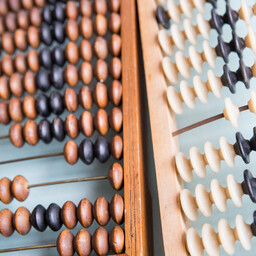Dyscalculia affects the perception of numbers and quantities. For example, a person with dyscalculia may need to count the dots on a dice one by one. They might also guess that the height of a room is 200 meters.
The main tool for a person with dyscalculia is their fingers. When they need to calculate 8 + 4, they count it using their fingers. They do not use automatic strategies that others use. The multiplication table may require more practice.
There is no dyscalculia statistics in Estonia, but it is underdiagnosed. For example, in the UK it was found that one in twenty students has dyscalculia.
Teachers should pay attention to whether some children still rely on fingers to calculate in the third and fourth grades. Dyscalculia can cause high levels of anxiety, such as crying or panic attacks.
Dyscalculia cannot be cured, but it can be alleviated. Children can use tools such as a counting chain or number blocks. It is important that the child can touch and see the calculations.
Dyscalculia is present in many famous people, such as Robbie Williams, Cher, and Bill Gates. Computational difficulties are not a barrier in life because these people are creative and intelligent.

